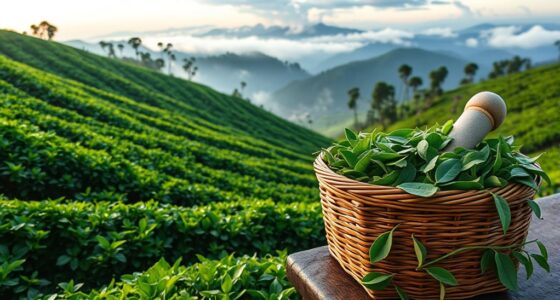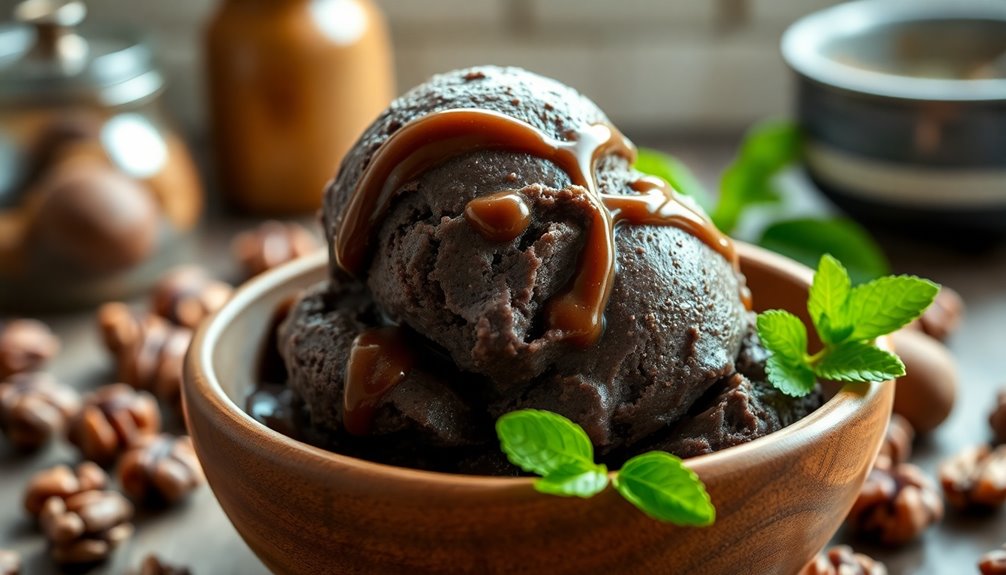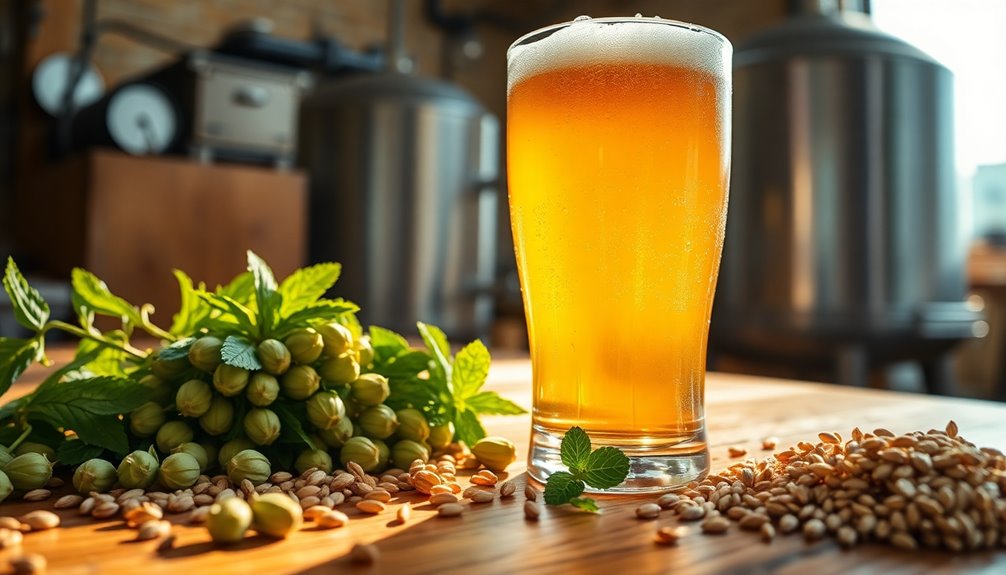Truffles typically follow seasonal peaks: black truffles are most abundant in winter, while white truffles flourish in fall. You’ll want to harvest and enjoy them at their best aroma and flavor for maximum impact. They pair beautifully with eggs, pasta, butter, meats, and cheeses, adding an earthy depth that elevates your dishes. Mastering the right timing and pairings enhances your culinary experience—if you explore further, you’ll discover even more ways to enjoy these prized fungi.
Key Takeaways
- Black truffles typically peak in winter, while white truffles are most aromatic in fall.
- Truffles enhance dishes like eggs, pasta, meats, and cheeses with their earthy, pungent flavor.
- Proper harvesting timing preserves aroma and flavor, ensuring high-quality culinary use.
- Truffles are best paired with simple ingredients that highlight their natural fragrance.
- Their seasonality influences availability, making freshness and timing key to optimal pairing.

Have you ever wondered what makes truffles so prized in the culinary world? It’s the rarity, the intense aroma, and the way they elevate simple dishes into extraordinary ones. But behind their allure lies a fascinating process involving truffle cultivation and truffle harvesting techniques that make these fungi so special. To start, understanding how truffles are cultivated is key. Truffle cultivation isn’t just about planting spores in the ground; it’s a precise science that requires selecting the right host trees, like oaks or hazelnuts, and creating the ideal soil conditions. You need well-draining, calcareous soil with a specific pH level to support truffle growth. Once the environment is prepared, inoculating the roots of young trees with truffle spores initiates the process. This can take several years before you even see the first signs of mature truffles. Patience is essential, as it’s not a quick endeavor—they’re a long-term investment. Additionally, understanding the foraging range of trained animals helps optimize the harvesting process and ensure the quality of the truffles. When it comes to truffle harvesting techniques, timing and skill matter just as much as cultivation. Truffles grow underground, so you’ll need trained truffle hunters and their specially trained dogs or pigs to locate them. These animals are key because they can sniff out the mature fungi without damaging the delicate fruiting bodies. Harvesting must be done carefully; using sharp tools, you gently lift the truffle from the soil, ensuring you don’t harm the surrounding mycelium or other truffles nearby. This delicate process requires experience to identify the perfect moment for harvesting—when the truffle emits a strong aroma but isn’t overripe. Proper harvesting techniques help maintain the quality and aroma that make truffles so sought after in culinary applications. Understanding the seasons when truffles are in peak condition is also crucial. Typically, truffle seasons vary depending on the region and species. For example, black truffles often peak in winter, while white truffles are most abundant in fall. Knowing these seasonal windows allows you to plan harvests and culinary uses accordingly. When it comes to pairing, truffles’ earthy, pungent flavors complement rich, creamy ingredients like eggs, butter, and pasta. They also work beautifully with meats and cheeses, enhancing dishes with their intense aroma. The key is to use truffles sparingly, letting their natural fragrance shine without overpowering the dish. By mastering truffle cultivation and harvesting techniques, you’ll better appreciate their seasonal availability and perfect pairings, making your culinary creations truly exceptional.
Frequently Asked Questions
How Should I Store Fresh Truffles to Maximize Shelf Life?
To maximize shelf life, you should store fresh truffles properly by using truffle storage techniques like wrapping them in a damp paper towel and placing them in an airtight container in the fridge. Keep them in a cool, dark place and change the towel daily to maintain their aroma and texture. Properly preserving fresh truffles ensures they stay flavorful longer, so you can enjoy their unique taste at its best.
Are There Any Health Benefits Associated With Eating Truffles?
You might think truffles are just a gourmet treat, but they also offer notable health advantages. Eating truffles provides nutritional benefits like antioxidants, vitamins, and minerals that support your immune system and overall health. Their unique compounds may even have antimicrobial properties. So, don’t overlook these flavorful fungi—incorporating them into your diet can boost your wellness while enhancing your dishes with their rich, earthy taste.
What Are the Most Common Truffle Substitutes in Cooking?
When you need truffle substitutes in cooking, try using truffle oil for that rich, earthy flavor. Mushroom analogs, like porcini or black trumpet mushrooms, also work well to mimic truffles’ savory depth. You can sauté them or add them to risottos and pasta dishes. These options give you that luxurious taste without the high price, making your dishes more accessible while still delivering a similar aroma and umami.
Can Truffles Be Used in Desserts or Only Savory Dishes?
You can absolutely use truffles in desserts, turning them into a culinary symphony. Imagine the earthy elegance of truffle chocolate pairing elevating your sweet dessert recipes, adding depth and sophistication. Incorporate finely grated truffles into ganaches or whipped creams for an aromatic surprise. Their rich, umami flavor balances sweetness beautifully, making truffles a versatile ingredient that transforms ordinary desserts into extraordinary experiences you’ll savor long after the last bite.
How Can I Tell if a Truffle Is High Quality or Not?
To tell if a truffle is high quality, start by smelling its aroma—fresh, strong, and earthy scents indicate top quality. Check its exterior appearance; a firm, unblemished surface with a consistent color suggests freshness. Avoid truffles that feel soft or have cracks. High-quality truffles have a rich aroma and a blemish-free exterior, signaling they’re ripe and flavorful, perfect for elevating your dishes.
Conclusion
Just like a master painter adds final strokes to a masterpiece, your perfect truffle pairing completes your culinary canvas. Remember, each season brings its own flavor palette, waiting for you to explore. When you combine the right truffle with complementary ingredients, you create a symphony of tastes that dance on your palate. Embrace the journey, and let your dishes tell their own story—rich, bold, and unforgettable—like a timeless work of art waiting to be admired.










